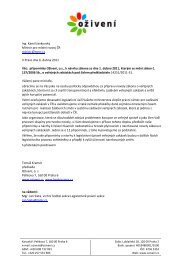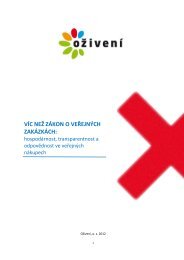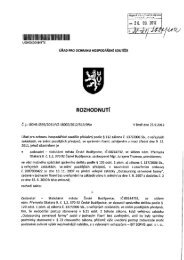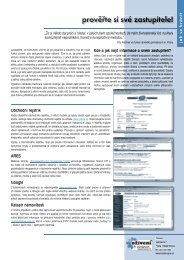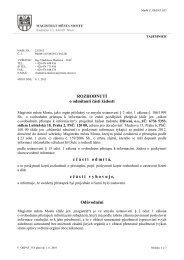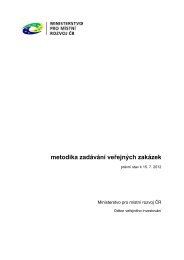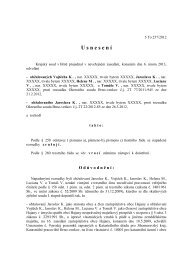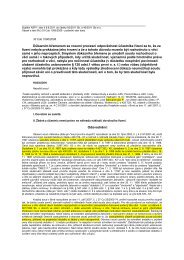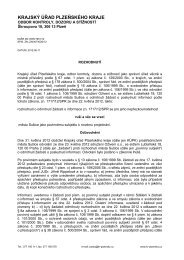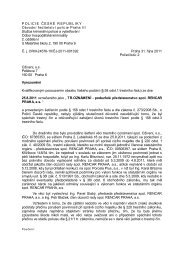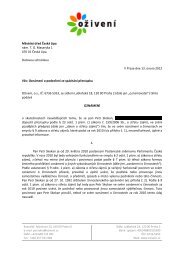Managing Conflict of Interest - Organisation for Economic Co ...
Managing Conflict of Interest - Organisation for Economic Co ...
Managing Conflict of Interest - Organisation for Economic Co ...
Create successful ePaper yourself
Turn your PDF publications into a flip-book with our unique Google optimized e-Paper software.
6 <strong>Managing</strong> <strong><strong>Co</strong>nflict</strong> <strong>of</strong> <strong>Interest</strong>private interest which is such to influence, or appears to influence,the impartial and objective per<strong>for</strong>mance <strong>of</strong> his or her <strong>of</strong>ficial duties.”The <strong>Organisation</strong> <strong>for</strong> <strong>Economic</strong> <strong>Co</strong>-operation and Development(OECD) <strong>of</strong>fers a similar description, defining COI as “…a conflictbetween the public duty and private interests <strong>of</strong> a public <strong>of</strong>ficial, inwhich the public <strong>of</strong>ficial has private-capacity interest which couldimproperly influence the per<strong>for</strong>mance <strong>of</strong> [his or her] <strong>of</strong>ficial dutiesand responsibilities.” Importantly, OECD observes that the appearanceor perception <strong>of</strong> a conflict <strong>of</strong> interest can be as damaging asa documented case <strong>of</strong> COI, since both foment public mistrust inpublic sector institutions, which can also lead to corruption. A situationthat appears to be a conflict <strong>of</strong> interest may be enough toundermine public confidence, even if an actual conflict does notexist or it has already been resolved.COI remains a complex and sometimes even elusive concept.Relationships between the private and public sectors have becomeincreasingly multifaceted and nuanced as a result <strong>of</strong> the continuouslyredefined role <strong>of</strong> the state and the globalization <strong>of</strong> economies.As public and private interests intersect in ways that are constantlyshifting, COI (or its perception) becomes a challenge <strong>for</strong> practitionersand policy makers alike. At the international level, meeting thischallenge has been an ef<strong>for</strong>t dating back to the mid-1990s.International anti-corruption instruments <strong>of</strong> a legally bindingnature, as well as <strong>of</strong> what is known as “s<strong>of</strong>t law,” include provisionsoutlining preventive measures, e.g., standards (codes <strong>of</strong> conduct),guidelines, and tools targeting public sector accountability andconflict-<strong>of</strong>-interest issues:• The Inter-American <strong>Co</strong>nvention Against <strong>Co</strong>rruption( Article 3: preventive measures);• The <strong>Economic</strong> <strong>Co</strong>mmunity <strong>of</strong> West African States Protocolon the Fight Against <strong>Co</strong>rruption (Article 5: preventivemeasures);• The African Union <strong>Co</strong>nvention on Preventing and <strong>Co</strong>mbating<strong>Co</strong>rruption (Article 7: corruption and related <strong>of</strong>fenses inpublic service);• The United Nations <strong>Co</strong>nvention against <strong>Co</strong>rruption( Chapter II: preventive measures);• The International <strong>Co</strong>de <strong>of</strong> <strong>Co</strong>nduct <strong>for</strong> Public Officials(Article II: conflict <strong>of</strong> interest and disqualification);ADB/OECD Anti-<strong>Co</strong>rruption Initiative <strong>for</strong> Asia and the Pacific



